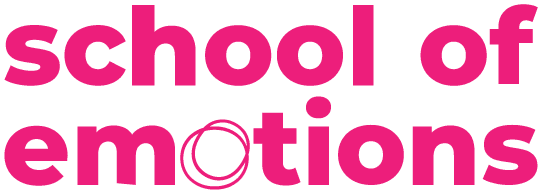Building The Coaching Ecosystem
Author: Team xMonks | Published on: Mon, 05 Jul 2021 10:04:47 +0000

Building The Coaching Ecosystem With Rohin Nadir
Coaching is an important part of company culture, offering numerous benefits like improved employee engagement, team commitment, loyalty, increased retention, and good leadership. Leaders and managers can utilize coaching skills to serve their employees effectively.
What is Coaching?
Coaching is a creative partnership between the Coach and the Client or Coachee. A coach helps the coachee implement and develop desired specific, meaningful actions and changes in an organization. A coach is a skilled person who assists the coachee in achieving professional goals.
Solution-based Coaching
Coaching is coachee or client-centered and action-oriented. It presents a solution-focused coaching model that moves the coachee to positively frame desired future outcomes. This model is systemic and molds the coach to become a successful leader in the future. Coachees should have a holistic context and approach, and they are examined on how they support and feed the value and integrity of the coach.
A coach facilitates the coachee's trust and inner resources skills. Managers and leaders should learn how to offer advice in a free zone. Client-centered coaching shifts the environment from command and control to support and guide. This coaching model helps in shifting attitude, behavior, and desired habits formation.
The core component of the Ericsson coaching model is that it is celebratory. The coachees' success in achieving goals shows the ultimate partnership between coach and coachee. The coaching skills help in developing mutual trust and creates an environment that develops mutual trust and respect. It improves your active listening skills. It stretches into syntax, tone of voice, and body language. It helps in improving communication at personal and professional levels.
The coachee can apply powerful questioning techniques and look forward. Coachee uses constructive open-ended questions to evoke discovery, insight, commitment, and actions to team development to shift from disengaged conversations to expansive and provoking. Coachee develops the skills of designing positive actions.
Coaching systematically explores the concerns and opportunities central to coachees' goals. It will help coachees to prioritize the issues and decision-making processes.
Coaching is not giving advice. It empowers leaders and coachees to take positive action on their own. The coachee can create accountability in the team and use a time management tool to promote employee's self-discipline and be accountable for the result of the intended action.
Coaching is an interesting paradox that is talked about so much. Explaining the coaching ecosystem in an organization is like going after a unicorn because it is not there. The coaching concept is not fully explored. So much can be done to explore the coaching concept, not just executive coaching but the coaching ecosystem.
Coaching culture is now called coaching ecosystem imported with creative approaching culture, success matrix, and other practices.
We begin with a model for an organizational view of the coaching ecosystem:
Level 1: Quality Conversation
Quality Conversation, which is also called "Skills from Coaching," is beneficial for everyone. This fundamentally helps you have improved interaction and conversation with people. Quality conversation is a very critical skill, and the level is for everyone. It feeds into the DNA of the organization.
Level 2: On the Job: Leaders as Coaches
This is a known level for leaders and coaches. It focuses on managing the team and engagement. Has obvious opportunities for leaders. The book on coaching, "Tower of Coaching," is discussed with coaching, which is critical for performance managers. For example, if managers do not have good coaching skills, they won't lead the team. One of the challenges does the potential manager see coaching skill as per ratio because it is a value system question.
Level 3: Professional "Executive Coaching"
Trained certified coaches are delivering time-bound coaching. Most organizations have the seduction of external coaches, which should be buffered with internal coaching. A trained coach is time-intensive, and most organizations spend time, budget, and effort on this level.
Scope of an Organizational Coaching Ecosystem
- Role transitions or critical role transition: Most organizations are focused on this area. It can be any transition that requires to become a functional head.
- Development plans: It is necessary for individual coaching and institutional coaching support. The challenge is to identify the people whose development plan requires focused coaching effort at an organizational level.
- Individual effectiveness: It is focused on developing specific skills that managers want to develop. The challenge is the coaching might expect a mix of coaching and trainer.
- Team culture and effectiveness: This area is the underexplored area. Coaching should support culture, change in culture, and effectiveness in teams. For example, when an organization goes through a culture change, how can coaching support at a team level. This culture change level deserves appreciation.
- Leadership development: Coaching supports leadership development.
Challenges in Coaching
- Coaching outcomes can be long-term and abstract. Applying coaching practice at a higher and larger level can be difficult and tricky.
- Getting coaching to the right people and coaching the wrong people. Coaching screened and relevant people with relevant perspectives. Scalability.
- There are good and bad coaches. Some experience good coaches, and some get bad coaches and their views on coaching effectiveness.
- It takes time to learn coaching skills. It takes time to learn coaching skills at all levels, trainer, coach, or someone interested in this knowledge. Immediate practicing of knowledge gained in coaching sessions is too important to avoid failure rate. The absence of support and practice mechanisms to people regularly leads to the failure of the ecosystem.
- A good coaching conversation takes time. Coaches have to sideline all other psychological demands to allot time for coaching training.
- Mentoring and coaching are used interchangeably. Mentoring is less time-consuming compared to coaching. People are still not aware of the difference between mentoring and coaching.
Key Success Factors from a Coaching Ecosystem Perspective
- Get leadership buy-in on what is the definition of the ecosystem: Let the readers role models the good and effective coaches. Role models who are publicly demonstrating the time and skill on training.
- Pick the right coaches and train them well, set up a CoP: Pick the right and genuine coach from external or internal coaches based on aptitude and knowledge. For the practice, develop a community of practice (COP) to filter coaches.
- Train all people leaders on the model, focus on exposure and practice, weave coaching skills into the KRAs: Give information on the ecosystem, exposure to good or bad coaching conversation through videos, and virtual practice sessions consistently. Share some good examples in the form of videos.
- Start early training, everyone on the skill from coaching: Start early in gaining coaching skills. Don't wait for the correct time to come.
Learning as an Inhouse Coach and Coaching Leader
- Differentiate between the coach and the trainer. Focus on the model depending on the type and skills that differentiate between both.
- Building trust is critical as a coach. It is one of the challenges when you are deploying internally trained coaches.
- Respecting confidentiality is equally important. The perception of confidentiality is more important.
- Make time to practice and upskill the coaching training to transform the coaching and coaching ecosystem.
- Invest time in making good notes during the coaching conversation. Screen the notes and detail them.
- Track effectiveness as a recommendation for coach and coaching leader.
Taking to get trained coaching to the masses with more time investment on coaching.
With three trends:
- Digital Coaches or AI-based coaching
- Digital Coaching
- Coaching will continue to be in demand; areas might expand with the example of Covid-post Covid wellness.
- Virtual coaching. How Covid affects the whole trend of coaching.
Frequently Asked Questions
Disclaimer: This conversation is a part of Coaching Matters between Rohin Nadir and Gaurav Arora discussing "Building the Coaching Ecosystem".Frequently Asked Questions
-
Find the right concern. Understanding change management models and finding the top people who have experienced the benefit of coaching. One should focus on scalability with coaching.
-
Focus on the coaching time commitment of internal and external coaches. Focus on where these people are hired. An external coach can bring wealth and value.
-
The team coach should ask questions to understand the situation more holistically, understand the group dynamics and team dynamics and feed it back. Trust and confidentiality are what are important in sharing conversations.
-
Recognize the theme of managing the workforce post-Covid and run the campaign to analyze how to reinforce the cultural drivers in interactions among employees.
-
All managers need to be able to coach. One should need to have a threshold to ascertain how they perform.




.png)